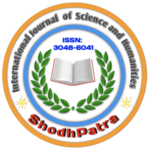| Article Title |
Transforming Education in India: Challenges and Prospects of Inclusive Education under NEP 2020 |
| Author(s) | Ms. Shagufta Khanam, Dr. Jarrar Ahmad. |
| Country | India |
| Abstract |
The National Education Policy 2020 (NEP 2020) marks a transformative shift in India's approach towards inclusive education, emphasizing equitable access for all learners irrespective of their socio-economic background, abilities, or circumstances. This theoretical study adopts an integrative review methodology, synthesizing policy documents, empirical studies, and reports from 2020–2025, to critically analyses the challenges and prospects of inclusive education under NEP 2020. Key provisions such as barrier-free infrastructure, teacher training, curriculum flexibility, and technology integration reflect a commitment to social justice, diversity, and community engagement. However, systemic challenges—including infrastructural deficits, insufficient teacher preparedness, socio-cultural biases, financial constraints, and the digital divide—continue to hinder effective implementation. Statistical insights from UDISE+ reveal persistent infrastructural inadequacies, with only 33.2% of government schools equipped with functional disabled-friendly toilets and 57.2% with operational computers. Strategies such as increased investment, comprehensive teacher training, bridging the digital divide, socio-cultural reformation, and robust stakeholder engagement are crucial to realizing NEP 2020’s vision. The paper concludes that while NEP 2020 provides a robust framework for inclusive education, achieving its goals necessitates coordinated efforts from policymakers, educators, communities, and civil society organizations to create an educational environment where every learner can thrive. |
| Area | Education |
| Issue | Volume 2, Issue 4, April 2025 |
| Published | 30-04-2025 |
| How to Cite | Khanam, S., & Ahmad, J. (2025). Transforming Education in India: Challenges and Prospects of Inclusive Education under NEP 2020. ShodhPatra: International Journal of Science and Humanities, 2(4), 92-104, DOI: https://doi.org/10.70558/SPIJSH.2025.v2.i4.45173. |
| DOI | 10.70558/SPIJSH.2025.v2.i4.45173 |
ShodhPatra: International Journal of Science and Humanities

 View / Download PDF File
View / Download PDF File